Hey, everyone! To start out with this week, I need to commemorate a moment. On August 28, 1917, Jack Kirby (born Jacob Kurtzberg) was born on the Lower East Side of Manhattan. He’d go on to become one of the most important and prolific creators in the field of comic books, imagining entire universes of characters who even today form the backbone of much of pop culture. Famously, while Kirby was an unparalleled creator, he wasn’t as strong of a businessman, and time and time again he found himself put-upon or taken advantage of by his employers. Nevertheless, he left behind a legacy that would be difficult for any latter day cartoonist to equal. Literally anybody who has a love for this medium owes a debt of gratitude to Jack Kirby for the stories he created and the manner in which he defined the very language of comics storytelling. Fortunately, much of his enormous body of work is constantly being reprinted so that new generations can discover its elemental power.
When I first started thinking about launching a Newsletter, I took some time to speak to a few people I know who had been maintaining Newsletters of their own for some time, to get a sense as to what sort of an audience they were able to reach on a regular basis. And after a couple of responses, I averaged things out to where a readership of 1,600 people seemed about right. Week before last, this feature passed the 1,600 readers mark, which was my stated goal from the start. So everything from here on in is all gravy (not that I’ll love you any less than your early bird brothers and sisters, new readers!) So thanks for being there, thanks for sticking around, and thanks for indulging me in my nonsense for a while.
I’ve been having a moment of nostalgia recently for the dingy, dilapidated, seedy comic shops of my youth. These weren’t really what you’d think of as comic book stores as we define them today. No, in the late 1970s, such things largely didn’t exist. The only place to buy new comic books was through an uncertain network of newsstands, candy stores and convenience stores, all of whom might contain an ill-stocked comic book spinner rack. Comic shops were then all about back issues, older comics, and they tended to not be devoted solely to comics. Many of them were general collectible stories, shops that would trade in gold and silver items, stamps and coins and other such ephemera. Old magazines, occasionally. Old records as well. These places would often have a section dedicated to old comic books. It was never well-lit, these places were always a bit unsavory, set up in the low-rent districts so as to keep the overhead to a minimum. But there was a strange magic to those places, one that’s not easy to duplicate in today’s far superior system of clean, brightly lit well-organized stores. Entering one of those places was like stepping into a magical world of possibility. You never knew just what wonders you were going to come across, so little literature about the history of the field existed at that time. Those stores boasted names such as Bush’s Hobbies, Ed’s Coins Stamps and Comics, Suffolk Collectibles, Stale Gum, 411 Books and a million more like them. Never mentioning comic books directly in the title—comics were still considered trash literature, disreputable, no fit business for a grown up to be in. Set up in church basements or on the second floors of legitimate businesses. Crammed in the back of the shop, tucked away from sight. People had started to realize that old comic books could be worth money (pretty much the only newspaper articles you’d see about comic books in those days were about some crazy person who’d paid $100.00 for SUPERMAN #1 or the like) but the business was still haphazard. Prices fluctuated wildly depending on where you happened to shop. The proprietors would occasionally be friendly, but just as often they fit the decor, with only growling patience for the kids who would come in looking for old funny books. Some of those guys, I suspect, are still in the business. These were the guys who helped to build the Direct Sales comic book market, who began to retail new comic books as well as old, and in doing so made it possible for the field to survive and prosper, when pretty much all other print publishing is on its last legs. Those gloomy, vaguely-dangerous venues are a thing of the past now, largely—and I no longer need them. I have a full understanding of the history of the field, and I own pretty much every comic book I could want, and can easily locate any that I might desire. And it’s a good thing in general that the field has become more respectable and more welcoming to people. But occasionally, I’ll dream of those romantic days, when you’d find some tucked-away hole-in-the-wall shop that had a few boxes of old comic books in corrugated cardboard boxes on the floor in the back, and you’d go digging through them and pull up the most astonishing finds. all of it cheap (or cheap enough.) I dream of visiting such stores these days again often.
But enough pontificating. It’s time to answer a few more questions from the audience, beginning with this bunch from Sergio Flores:
A few questions for you about creative team turnovers. Is there a typical “notice period” that creators give, or that you ask for, when you have a creator or set of creators working on a book? What the shortest notice period you’ve had to deal with? Also, is there still a backlog of fill-in stories to pull from if and when the Dreaded Deadline Doom hits, like there used to be in the past? Also, what goes into the decision to keep a series’ numbering versus starting with a new number one issue; or these days is a number one issue pretty much an automatic thing with every new creative team?
Well, the shortest notice period is always “immediately” and no editor who’s worked in the field for any length of time hasn’t encountered this at some point. The better, more honorable creators won’t leave you in the middle of a job, but I have had those over the years who have quit and walked out in the middle of an issue. That sort of behavior tends to burn bridges, though, and it turns out that I’ve had more longevity than most would have thought, so it wound up being a bad bet for those folks. More typically, there’s a little bit of a lead time when creators are cycling off of a run, in particular a run of any length, and you need to line up their replacements.
We no longer do inventory stories the way that we used to, and the reason is that the conditions in the marketplace have changed dramatically. Back in the newsstand days, comics were bought and sold as an impulse purchase, so the specific contents of any given comic book didn’t much matter apart from it probably needing to have a story about Captain America if the title of the comic book was CAPTAIN AMERICA. But as the Direct Sales market of comic book specialty stores began to coalesce, it became obvious that certain factors could affect the sales of a given issue—character, creative team, storyline, important story event, etc. So comic books are now ordered individually on an issue-by-issue basis. So while a fill-in issue wouldn’t cost you any sales on the Newsstand particularly (again, assuming that it had Captain America in it), that same fill-in would cripple your numbers in the Direct Market if its fill-in quality was readily apparent. Additionally, nobody likes to buy what amounts to a throw-away story, especially when the books are so expensive. So it’s a methodology that doesn’t work in the same way today as it once did.
Along those same lines, these days, given the manner in which our Retailer community orders the books, there really isn’t any good reason not to start off a new creative team run with a new #1, and a bunch of sales-related reasons not to maintain the numbering. As a quasi-recent example, remember a few years ago when Geoff Johns and John Romita Jr. came on board SUPERMAN during the New 52 starting with issue #32 or #33 I think? With that creative team and that character, that should have been a top-selling book in its debut month. And it did all right. But the same book with the same story and artwork would have generated greater sales and a greater number of initial readers had it been a #1 instead—and presumably, some of those readers would have stuck around. I know that those of us who grew up in a different era have a nostalgic pull towards those always-increasing issue numbers, but at the end of the day, he issue number isn’t really all that important. And given that, I want to give my new creative team the best leg up that I can—and I also want to bring in as much return on investment as I can, so that the run can go on indefinitely.
Faithful reader Evan “Cool Guy” asks:
Hey Tom, what are your thoughts on one genre (superheroes) dominating the mainstream American comics scene? I love superheroes so I don't mind it, but it also seems incredibly weird! One way I described it to a friend is that it's like if all movies were westerns and people said "No I don't feel like watching a movie, I'm not in the mood for cowboys right now."
Well, Evan, I do think that there’s plenty of diversity of material in the marketplace at the moment, more than there was a decade ago and more then than there had been twenty years before now. But I understand what you’re getting at. But the truth is, that wasn’t the result of some chicanery, some three-card-monte shell game that caused all of the other genres to fall away leaving super heroes as the last man standing. Rather, super heroes were the properties that were able to sustain themselves and hold their audiences the longest, and so they were the titles that survived. If this somehow meant that people were prohibited from doing other kinds of comics, I might be worried about it. But they really aren’t, as any survey of what’s being published right now ought to illustrate. OF course, a Marvel or a DC is likely going to put most of their efforts into super heroes—because that’s what they’ve had the most success with over time. But we do experiment with other genres now and again. It’s just that, having become so equated with those super hero universes, it can be difficult to attract readers who might be interested in some other genre to such a series published by Marvel and DC because the audience expectation of those companies is so set in stone.
Rob London inquires:
In one of your blog posts of old, you relate the tale of how a Venom guest-appearance in Secret Defenders was deleted, then un-deleted, because the absence of Venom in a comic solicited as having Venom in it would make the book returnable. Is that rule still in place? I’ve read some comics that vary wildly from their solicits…
Yes, although the specifics of how that all works has changed somewhat. The key thing is understanding which factors are more likely to impact on the sales of a particular issue. As mentioned above, that might be a creator, a story element, a specific event in the life of the characters, a new character debuting, whatever. If you advertise one of those and it’s not in the issue, then the book becomes returnable, and you lose some of your profitability. On the other hand, there are also plenty of elements that, while they may be of specific interest to individual fans aren’t likely to impact on the sales of the book overall. In those cases, if something isn’t quite as advertised, so long as what was delivered was of equivalent sales value, it generally isn’t a problem. So, for example, in the says of that SECRET DEFENDERS issue, when Venom was an especially hot character, we might have been able to substitute a Wolverine appearance and had no difficulty. That said, it can sometimes be contentious in terms of getting all parties to agree on what constitutes equivalent, so we try to notify Retailers of any upcoming changes in our books prior to their Final Order Cutoff date, so that they can adjust their orders up or down as necessary.
And one last one from Gustavo:
How up to date do you keep with Marvel books that you're not involved with? I'm sure you're made aware of important developments via summits and whatnot, but do you have any books that you read as they come out monthly or in trade?
As you’d imagine, it varies. To start with, since I oversee what we think of as the Marvel Heroes area of the line, I’m reading out all of the issues that fall under that umbrella even if I’m not directly editing them. That would include the output of editors such as Wil Moss, Darren Shan and Alanna Smith among others, as well as things such as CAPTAIN MARVEL even though I don’t typically read Sarah Brunstad’s other books out. I’ll also tend to get a look at other books beyond that which are doing stories that impact on my world. So all of the AXE tie-in issues, for example, are read by me ahead of time. And I do read-out in general for the STAR WARS line of titles, so I read all of those books as a matter of course. Everything else beyond that is a bit of a crapshoot, and down to what I have an interest in and what I have the time to keep up with. I’m mostly current on AMAZING SPIDER-MAN, for example, having burned through pretty much the whole Beyond storyline in two sittings as well as all of the stuff that came after it. But on other books, particularly the X-line, I’m woefully behind. I pulled aside the entire run of SWORD, for example, intending to read it, but haven’t been able to get to it, nor to most of the X-MEN RED series that followed it (except recently, when I read the AXE issues.) I do receive a box of comp copies from marvel every month which includes a copy of all of the books that we publish, and I try to keep up with as much as I can. But because i also read other things, I can never quite get current. At present, I have a shelf and a half’s worth of unread Marvel books sitting there, and I’m going to need to go through it and cull stuff that I’m just never going to get to, much as I might want to. Things like the THE END books we published a year or so back, or the recent 2099 titles will likely be among the first to go, simply because they’re less likely to be something I’ll need to know about.
Behind the Curtain
.As we were memorializing Tom Palmer just last week, I thought I’d share an example of just what his work looked like.
This is a copy of a penciled Neal Adams page from X-MEN #62. It’s a pretty typical Neal page for the era—hyper-realistic, loose in some places, tight in others. And dramatic as hell.
Here’s that same page inked by Tom Palmer. Anyplace where Neal was loose and unspecific, Palmer tightened things up, solidifying the drawing. Tom also chose to apply zip-a-tone to that close-up of Magneto’s face in the final panel, something that Adams hadn’t specified. (For those unfamiliar, in those pre-computer days, the way you would get grey tones in comic books was through the use to zip-a-tone, plastic sticky-backed transparent sheets with a dot pattern on them that would need to be cut out with an X-Acto knife and applied to the desired areas. Using zip would allow artists to increase the number of colors and tones they could get on a finished page.)
And here’s the page in the printed book. Tom Palmer also provided the coloring for this issue, which is a lot more sophisticated than much of what was being done in that discipline at the time—a lot of comic book was still being colored in what we call the “sky-blue-grass-green” approach to coloring. But here, Palmer uses subtle monochromes to heighten the drama of the images. It’s a more painterly way of thinking about a comic book page, and it was a way of thinking that began to spread throughout the industry. By coloring as well as inking the book, Palmer had a far greater degree of control over the final product than most people took at that time.
Pimp My Wednesday
Here’s what’s a’comin’ your way this week from my office:
MOON KNIGHT BLACK, WHITE & BLOOD #4 finishes up this fun anthology series with three last stories about the nocturnal avenger depicted in the limited palate of black, white and red. The opening story written by Christopher Cantwell and drawn by Alex Lins is especially affecting—Chris wrote it in response to the recent death of a friend of his, so it carries some weight. And Paul Azaceta, who’s been doing some nice, pulpy work on PUNISHER gets to write as well as draw a story in this issue, his first I believe. The remaining tale is written by Nadia Shammas, who was not all that long ago a Marvel intern, and Dante Bastianoni, with whom I worked on FANTASTIC FORCE some thirty years ago. So it’s another nice package for those who need a bit more Moon Knight in their lives.
Meanwhile, THE VARIANTS powers on through with a middle chapter that turns over some cards while also cannily guest-starring Marvel’s streaming woman of the month, She-Hulk. I have to confess that writer Gail Simone genuinely surprised me when she revealed who was behind the shenanigans in the series—a reveal you won’t get to until issue #4. But you’ll need to have read this issue tomake sense of it all as well. And it’s beautifully drawn by the great Phil Noto, who provides full color art throughout. I don’t know that it’s our best selling series or anything, but I’m quite pleased with the way this story is shaping up.
And after a few delays thanks to supply chain issues, the first issue of the new THUNDERBOLTS will be hitting the stands this week, courtesy of writer Jim Zub and illustrator Sean Izaakse. It’s a direct follow-up to the events of the DEVIL’S REIGN crossover that positions Hawkeye’s new crew as the only licensed super heroes of New York City. Zub has been likening its approach to that of TED LASSO, and there is a similarity there to be certain. And it’s a pretty fun super hero title all around.
And my assistant editor Martin Biro continues to shepherd MECH STRIKE: MONSTER HUNTERS. This third issue raises the stakes even further, with some new arrivals and a couple of story twists. Christos Gage handles the writing and Paco Diaz is on the artwork, and while it may not win an Eisner Award or anything, it’s a great deal of fun and adventure.
Over on MARVEL UNLIMITED in the AVENGERS UNLIMITED track we have the second installment of The Kaiju War by creators Murewa Ayodele and Dotun Akande. (Once again, ignore that 008 on this image, it’s actually issue #10 now that some stories have been shuffled.) Iron Man, War Machine and Ironheart are all that stands between a cadre of gigantic monsters and an inhabited planet. After last week’s prologue that set the stage, this one gets right into the action in a big way.
A Comic Book On Sale 30 Years Ago Today, August 28, 1992
Kind of funny in a way that this book came up today, as editor Nick Lowe is readying the new edition of this story for print even as we speak, some thirty years later. MIRACLEMAN #23 was the second-to-last issue of the series to see print, its story going interrupted for three decades. Those Miracleman stories (Marvelman stories originally) produced in the 1980s and 1990s were ahead of their time in terms of treating a super hero concept with a more hard science fiction approach, seeing how the appearance of a single super-powered character would inevitably change the entire world, both for better or worse. They influenced everything that came afterwards, to the point where their impact is virtually universal. Having followed up original author Alan Moore with The Golden Age, which explored the brave new society created by Miracleman and his fellow super hero gods in the aftermath of Moore’s story, creators Neil Gaiman and Mark Buckingham moved into the second act of their three act storyline with this, The Silver Age, which reintroduced Dicky Dauntless, Young Miracleman, to the storyline. Dicky had been killed back in 1963 in the same event that had given Miracleman’s alter ego Mike Moran amnesia about his heroic persona for decades. But now, the advanced technology of the world Miracleman has built allows them to resurrect his young protege, who must take a frightening step into a world that he can scarcely recognize. These books were far more literate and than most of what was being done at the time, and even today they stand up quite strongly to contemporary treatments of the subject matter. A number of years ago, after Marvel had arranged to purchase all of the rights to Miracleman, Neil came to one of our periodic editorial retreats, where he walked us through the broad strokes of the remainder of this story and the third installment, The Dark Age, which would follow. It’s sometimes felt as though we would never get there as one delay or another slowed things down for so long. But now, MIRACLEMAN: THE SILVER AGE is finally on the schedule and ready to be released. And in fact, Mark Buckingham completely redrew this entire issue, reckoning that his art style had changed so much in the intervening years that it would be discontiguous if he didn’t do so, so even readers who read MIRACLEMAN #23 thirty years ago have something to look forward to here. Anyway, the rest of popular culture has caught up to the themes that Alan Moore and then Neil Gaiman were using in their exploration of super heroes as a concept since those days, but the work is still good and strong and worth experiencing. Honestly, I was a huge follower of the series—in those days, you might get a new issue every eight months to two years, so the delays are nothing new. And I am very excited about getting the remainder of this story.
A Comic I Worked On That Came Out On This Date
I hadn’t realized that this start to the tenure of Mark Waid and Mike Wieringo on FANTASTIC FOUR had been released on Jack Kirby’s birthday in 2002, but that seems fitting to me somehow. I’ve written about this book and showed off a ton of behind-the-scenes artwork in this piece here, so there isn’t much more I can say about it that’s new. But this run is my favorite thing of all the assorted series and stories that I’ve worked on while at Marvel—only the Dan Slott/Mike Allred series of SILVER SURFER rivals it on that account. So I couldn’t let it pass without noting it. This was the cheapest issue of the title ever released, cheaper even than the first two issues which carried a 10 cent price tag. The reason for this is that DC had at that time done a BATMAN promotion called The 10 Cent Adventure, which offered the first chapter of a sweeping new storyline for a loss-leader bargain price. Not to be outdone (especially during a period when he had a real mad-on for DC and its head honcho Paul Levitz) Marvel president Bill Jemas came up with the idea of launching this new series of FANTASTIC FOUR with an even cheaper cover price, a mere nine cents. Things didn’t entirely work out to Bill’s satisfaction, and there was a lot of drama surrounding the run as a result, but it was always popular with the fans and it’s reputation has held up over the years, thankfully. One memory that I can share that most will have no idea about happened just a few weeks after this issue came out. At that time, we were already working on the JLA/AVENGERS crossover with DC editors Dan Raspler and Steve Wacker (whom I would eventually hire to come over to Marvel.) Steve was at that time helming a super hero-themed improve comedy show called KA-BAAM off-Broadway, and one evening he suggested that myself and my assistant at the time, Mark Sumerak, join in on a performance along with him and Raspler. It was a fun evening, and Sumerak turned out to be something of a breakout star (whereas I bumbled my way through the bits I contributed to it. Wacker delighted in having me have to climb up to the stage overhang area repeatedly.) It was filmed, but Wacker has never shared the footage with me since then. Anyway, figuring that we were about to go to a performance where the audience might be predisposed to an interest in super heroes, Sumerak and I swung by Midtown Comics on the way to the venue and bought a case of 100 copies of FANTASTIC FOUR #60 as a special giveaway to all attendees who came to the show. I don’t know that picked up any additional readers with it necessarily, but it was all worth it when Wacker related to me just how gobsmacked Raspler was that we had done this, and the fact that it had never occurred to him to do the same with any DC books.
Another Comic I Worked On That Came Out On This Date
I also hadn’t remembered until setting up for this week’s Newsletter that the first issue of AVENGERS with Geoff Johns as the writer had dropped on exactly the same day as that FANTASTIC FOUR issue, August 28, 2002. This was an acid test for me as the editor of AVENGERS, as now not only was George Perez gone, but also Kurt Busiek as well. The two of them had made the series a huge success when we launched and while the sales had calmed down somewhat, it was still a popular series at this point. But it wasn’t necessarily beloved by the new Marvel management, who were more focused on the Ultimate line and other similar new initiatives. I was particularly worried about the performance of this issue because, as a promotional stunt, Bill Jemas had arranged with Wizard Magazine for them to preview the entire issue a few months ahead of time, which required us to get it done early. I feared that having read the thing beforehand, many readers wouldn’t but it when it actually came out, and our numbers would tank as a result. Happily, that proved not to be the case,so this is one of those instances where Bill was smarter than I was. (That said, one of the reasons he selected AVENGERS for this experiment is that he didn’t care about it, and so if the book did lose sales, well, it wasn’t anything important anyway.) Bill’s relationship with Geoff started off contentious—in his first conversation with Johns, Bill told Geoff that he didn’t know how to write—but as time went on and Geoff was able to rise to every challenge put in front of him, Bill grew to have a grudging respect for him—so much so that when Geoff wound up signing an exclusive contract with Dan Didio at DC Comics, Bill couldn’t quite believe it or understand it. He asked me on multiple occasions just why Geoff was doing this, as though it was perhaps some sort of a bargaining tactic or a practical joke or something.
And Another Comic I Worked On That Came Out On This Date
Now this thing, released on August 28, 2019 in celebration of Marvel’s 80th anniversary as a comic book publishing company, was a bear. It remains, by far, the most complex and challenging single issue I’ve ever worked on, and I’m insanely proud of it. For those who haven’t seen MARVEL COMICS #1000 before, the conceit was that each individual page would tell a single page story from throughout Marvel history, with a completely different creative team. In this way, we’d have contributions from a wide swath of Marvel talent past and present, and be able to touch on the widest possible range of characters, series and storylines. I lifted the basic idea from Jordan White and the X-MEN office, who had done a holiday special the year before that was set up like an advent calendar, with each page a single holiday-themed adventure of one mutant or another. I was impressed by the results, but I also saw a few ways in which I thought I could improve on the model they’d laid out. So when the notion for an anniversary book came up, I was quick to go all-in on this concept. The iron man and MVP of MARVEL COMICS #1000 was absolutely Al Ewing, who took on the herculean task of writing close to a third of the book, crafting a spine story for the narrative that would begin in 1939 (in a panel taken straight from MARVEL COMICS#1) and create a mystery leading to the introduction of a new legacy character, the Masked Raider. Al also worked out a superstructure for the other stories, since each page of the book needed to connect in some way to the publishing events of a given year in Marvel’s history. I wound up writing and rewriting the little year factoids that ran on each page maybe half a dozen times as we wound up shuffling pages as new creators joined the fold and their story ideas had to be incorporated into the mix. There were also a series of direct interview pages, a concept that Joe Quesada had thrown out for the anniversary, in which the characters would answer some specific question relating to who they are and what they do posed to them by an unseen reporter. We were even able to get permission to include both Conan and STAR WARS in the book, making it a true rarity (as well as the only time I’ve worked on a STAR WARS project directly.) Everybody who contributed definitely brought their A-game, and it was a true cavalcade of stars. In fact, once the book was announced, a whole fleet of additional creators from the past started reaching out asking if they could be a part of it, which forced us to create the “spillover” one-shot MARVEL COMICS #1001 that shipped the following month. By popular vote, the best single page story in the issue was produced by Brad Meltzer and Julian Totino Tedesco, and is reproduced below.
So who were the ones that got away, the creators we couldn’t get to contribute to this book? Well, Mark Millar for one, whose Netflix deal didn’t allow him to participate. Similarly locked up at DC was Brian Michael Bendis, although he at least asked about the possibility and was rebuked. But the one that I regret the most was Jim Shooter. I was so excited when Jim responded to my outreach and was interested in contributing a story—he hadn’t written anything for Marvel since his departure in 1987. Unfortunately, when I turned Jim over to our people in charge of paperwork and getting creators set up in ur accounting system, he didn’t like the money that was being offered and recused himself. I didn’t realize what was happening until it was all over, and I regret that. I don’t know how much cash he was looking for, but I’d have paid the difference out of my own pocket to get him to contribute a page for this. He wanted to so a Doctor Doom story, to potentially be illustrated by Jim Starlin with whom he was on good terms, and I’m sure that would have been terrific. Ah, well.
Monofocus
Again this week, much of my media activity was confined to continuing with and finishing up shows that I’ve spoken with in weeks past, such as LIAR GAME. I started the second series of that show this past week, while also following through with more of NEVER HAVE I EVER, the season ender of ONLY MURDERS IN THE BUILDING and the season premiere of STAR TREK: LOWER DECKS, which I thought was only all right.
Looking for something to fill the space left by the absence of EXTRAORDINARY ATTORNEY WOO, which wrapped up its run a week ago, I naturally other K-Dramas that featured a focus on Autism. There were two of note, and so I went with the one that it was much easier to sort, MOVE TO HEAVEN, which is still available on Netflix. (The other, THE GOOD DOCTOR, had been on Netflix, but appears to have left the service.) It’s proven to be a very interesting series, though it isn’t quite the show that it presents itself as in its trailer. The show is about lead character Geu-ru, an autistic young man who works as a “Trauma Cleaner” at the family-run firm Move To Heaven alongside his father—they clean out the living spaces of the recently deceased, and in doing so are able to convey a final wish or request to the family or loved ones of the demised. But after his father suddenly and unexpectedly passes away, Geu-ru’s entire situation is thrown into turmoil, as his ne’er-do-well pit fighter uncle Sang-gu moves in. His father had hoped that Sang-gu would become Geu-Ru’s guardian, but fresh out of prison and in debt up to his eyeballs, Sang-gu’s interest lies more in selling the apartment that the father has left him and Geu-ru in order to make good on the money he owes. However, to qualify as Geu-ru’s guardian and inherit the place, Sang-gu is required to work alongside Geu-ru as a Move To Heaven employee for three months. So what we’d seem to have here is a typical odd couple situation where the two mismatched roommates would find common ground and learn from one another. And over the course of the series, perhaps that’s what we’ll ultimately get. But among the four episodes I’ve watched so far, things aren’t quite that cut and dried. It’s a much darker show than I had been expecting given its premise—not that that’s bad, it just meant that I needed to shift my expectations somewhat.
Elsewhere, at the recommendation of writer Dan Slott, I started watching the Disney= documentary series about the history and formation of Industrial Light & Magic, appropriately titled LIGHT & MAGIC. I only just started this one, but the first episode was chock full of interesting archival footage concerning the making of STAR WARS and the setting up of special effects colossus ILM. I am a sucker for this sort of making of/behind the scenes documentaries when it comes to something that I’m interested in, so I’ll no doubt follow the series through to the end. In particular, it’s fun to watch a modern day George Lucas intercut with footage of him opining that was originally filmed back in the 1970s when and immediately after he was working on the movie. It’s also given me a hankering to see AMERICAN GRAFFITI again, which I don’t think I’ve watched in more than 30 years. I didn’t appreciate it all that much as a kid, but I suspect that I would get more out of it today.
Also, I didn’t go out to the movies to see TOP GUN: MAVERICK, but this past week—presumably because the film is coming to streaming shortly—all of the best scenes wound up getting posted to YouTube, and I wound up watching them. It’s relatively easy to put them together into the final film, especially since the movie appears to closely mirror the story pattern of its source material, TOP GUN. (I have a strange relationship with TOP GUN as a move. Back in college, I dated a girl who was wild about the picture, in particular the shirtless volleyball scene, and so I must have sat through it something like forty times in the space of just a few months—the things you do for love when you’re young. Consequently, I’ve been very much blown out on it ever since, especially given that that relationship skidded out badly not long afterwards.) It’s a very well put together film of a sort that used to be ubiquitous in the 1980s but which has fallen out of favor in recent years. I’ve seen any number of think pieces on why it’s done so well at the Box Office, citing such factors as Tom Cruise’s eternal appeal to the breathtaking wizardry of its combat flying sequences and of course a dollop of nostalgia based on affection for the original movie, and I think all of those elements play a part for certain. But one thought that crossed my mind about it, and why it seems so universally beloved right at this moment comes down to the fact that it is the most nakedly patriotic film that I can recall within the last decade and a half. Seriously, it’s no secret that this has been a harshly divided country over the last several years, and no matter which side of that divide you happened to be on, you had legitimate reason to feel unhappy about the direction things have been going in the United States. But TOP GUN: MAVERICK takes a bunch of beautiful people, our soldiers, our boys, regardless of their personality flaws and shortcomings and pits them against a faceless, generic enemy (described solely as a “Rogue Nation”) over whom they triumph due to pluck and moxie and courage and skill. Our guys are reckless, they’re cowboys, always skirting the edges of the rule book if not discarding it entirely. Because good old American gumption knows better and can accomplish miracles. And for all that we are divided, when the chips are down, our guys overcome their difficulties, the asshole still pulls your fat out of the fire, the weak link shows what he’s truly made of, and everybody gets to come home together as heroes to the acclaim of all. It’s a super hero movie, the heroes just wear aviator’s uniforms rather than Captain America costumes, but the ethos is very much the same. It’s got a very Aaron Sorkin viewpoint, where everybody, even the hardass Admiral who wants to drum you out because you can’t play by the rules is ultimately a good guy who’s trying to do the right thing and is on the same side. I think that’s a message that resonates these days, I think it’s something that people want to see. And I think people also want to feel good about America again, to feel patriotic about their country and its history and heroes, loose cannons though they may be, and this film gives them license to do that. Plus, it’s got an equivalent to that volleyball sequence where all of the easy-on-the-eyes airmen play football in the beach surf. Somewhere, my old college girlfriend is no doubt feeling warm.
I have to say, I need to find some way to scale these Newsletters back a little bit. They take an absolute eternity to write. But I never want to skimp on any of the assorted topics that we cover, and there’s always more to be said than there’s space for. But I’m going to attempt to find some greater equilibrium in future weeks, so if you have any thoughts on what I should most shut up about, I’d be interested in hearing them. Apart from that, thanks for being there, and I’ll see you over the holiday weekend!
Tom B





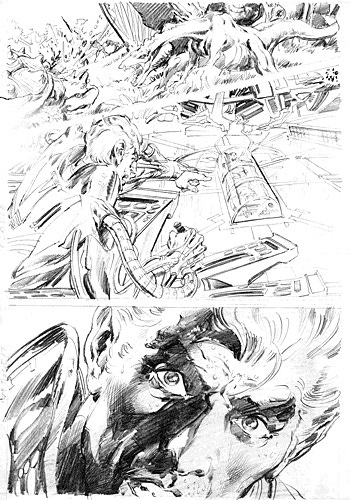
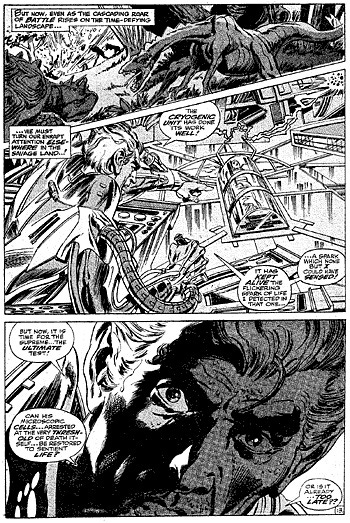
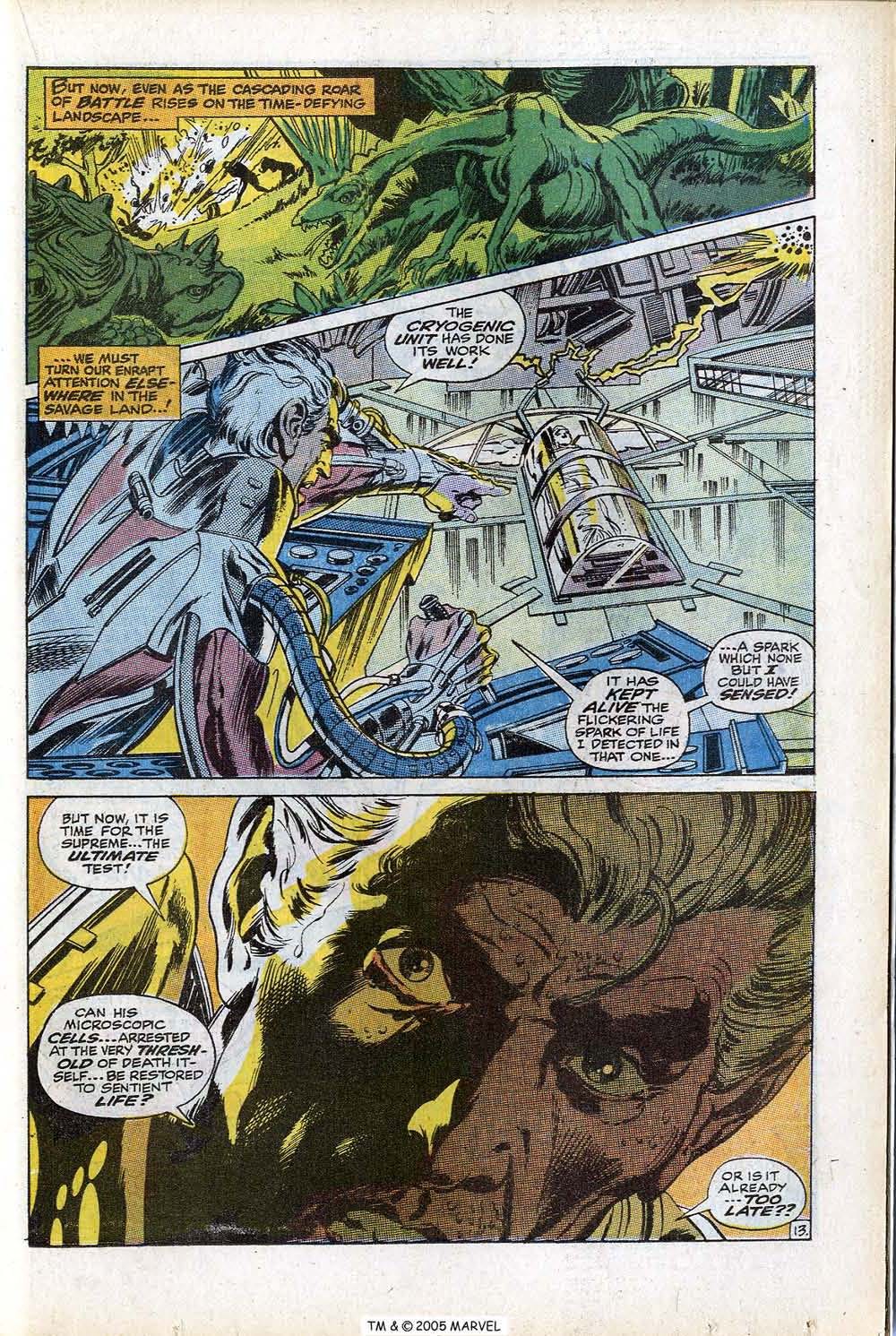
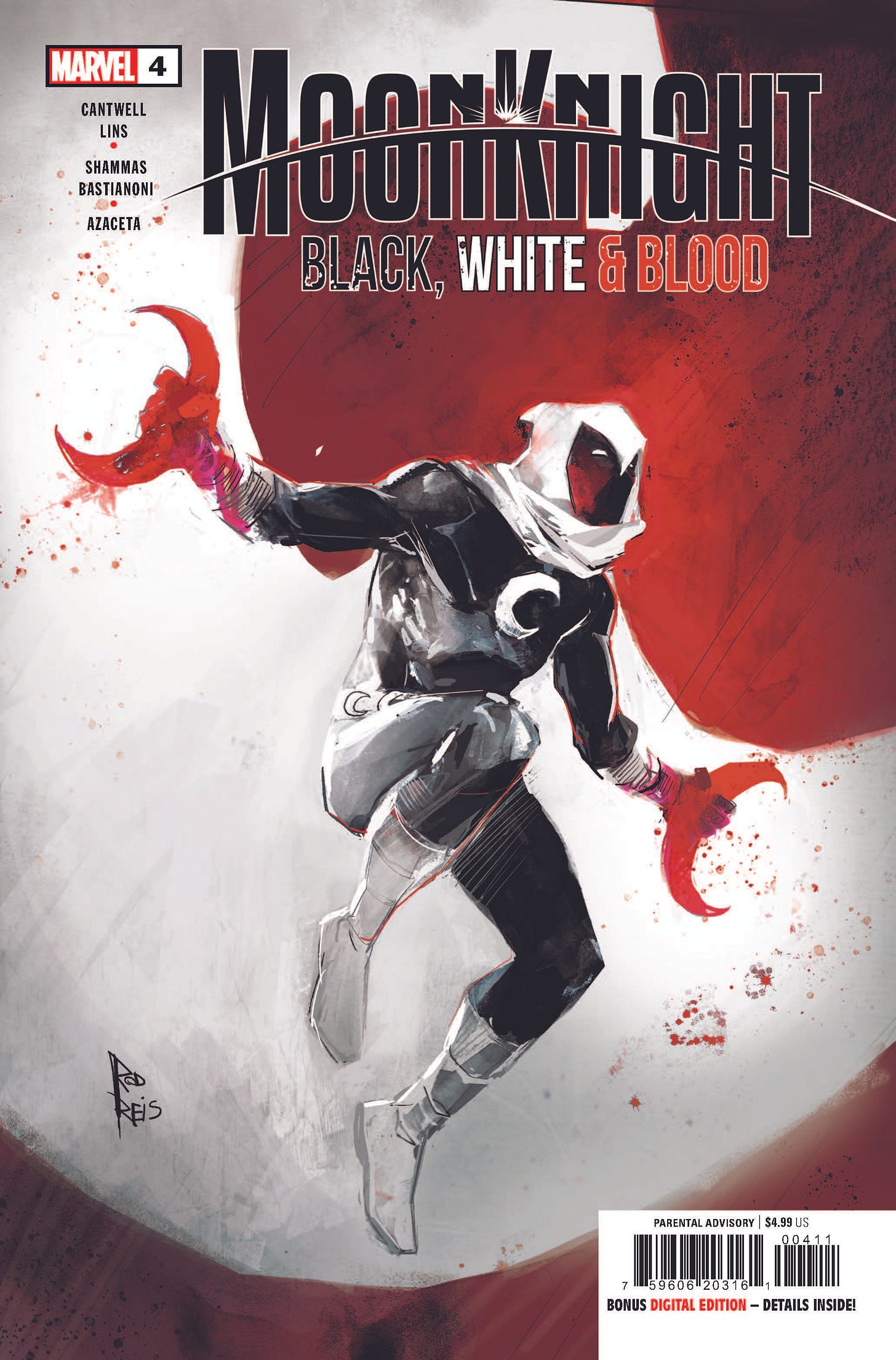
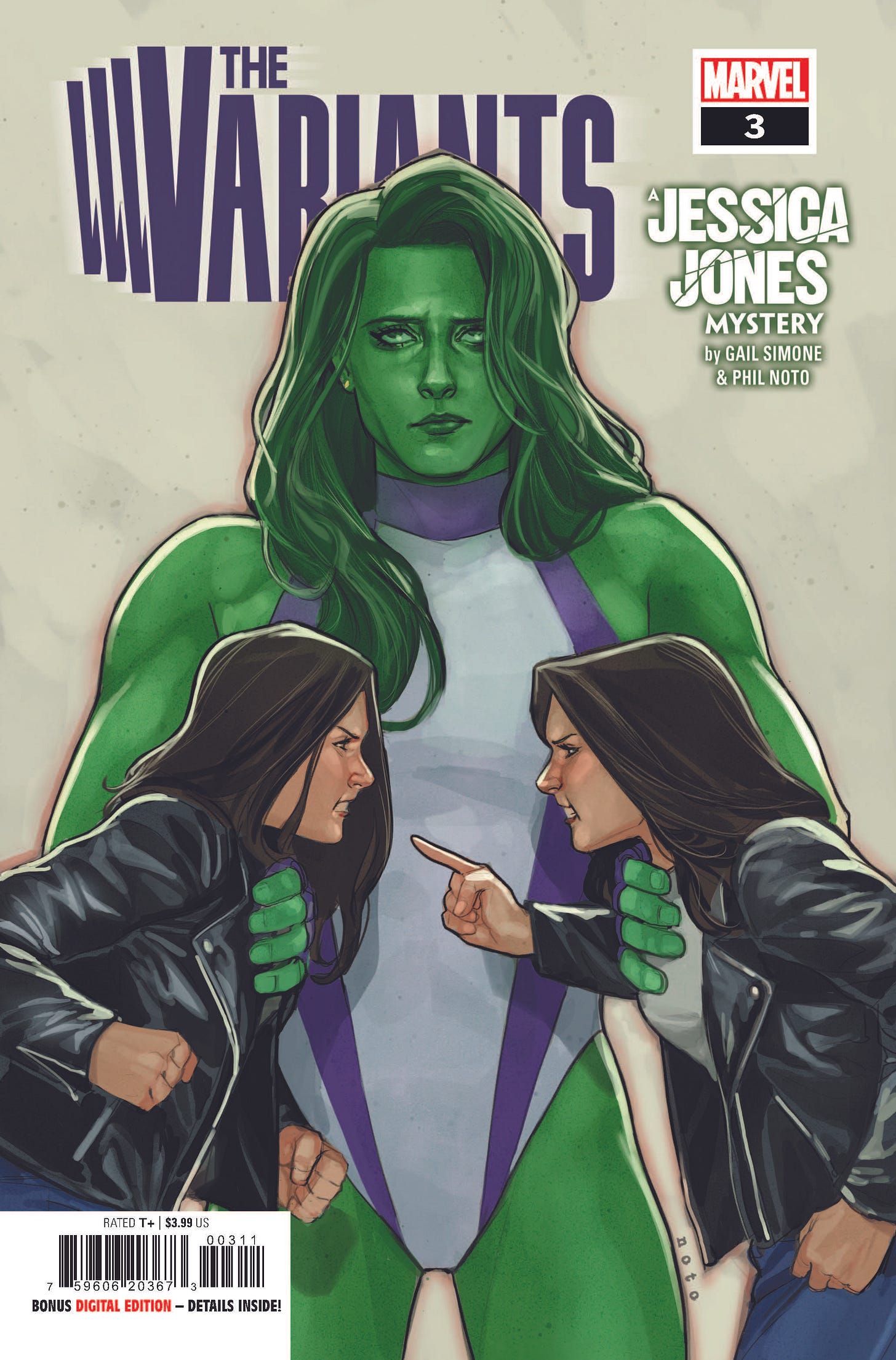
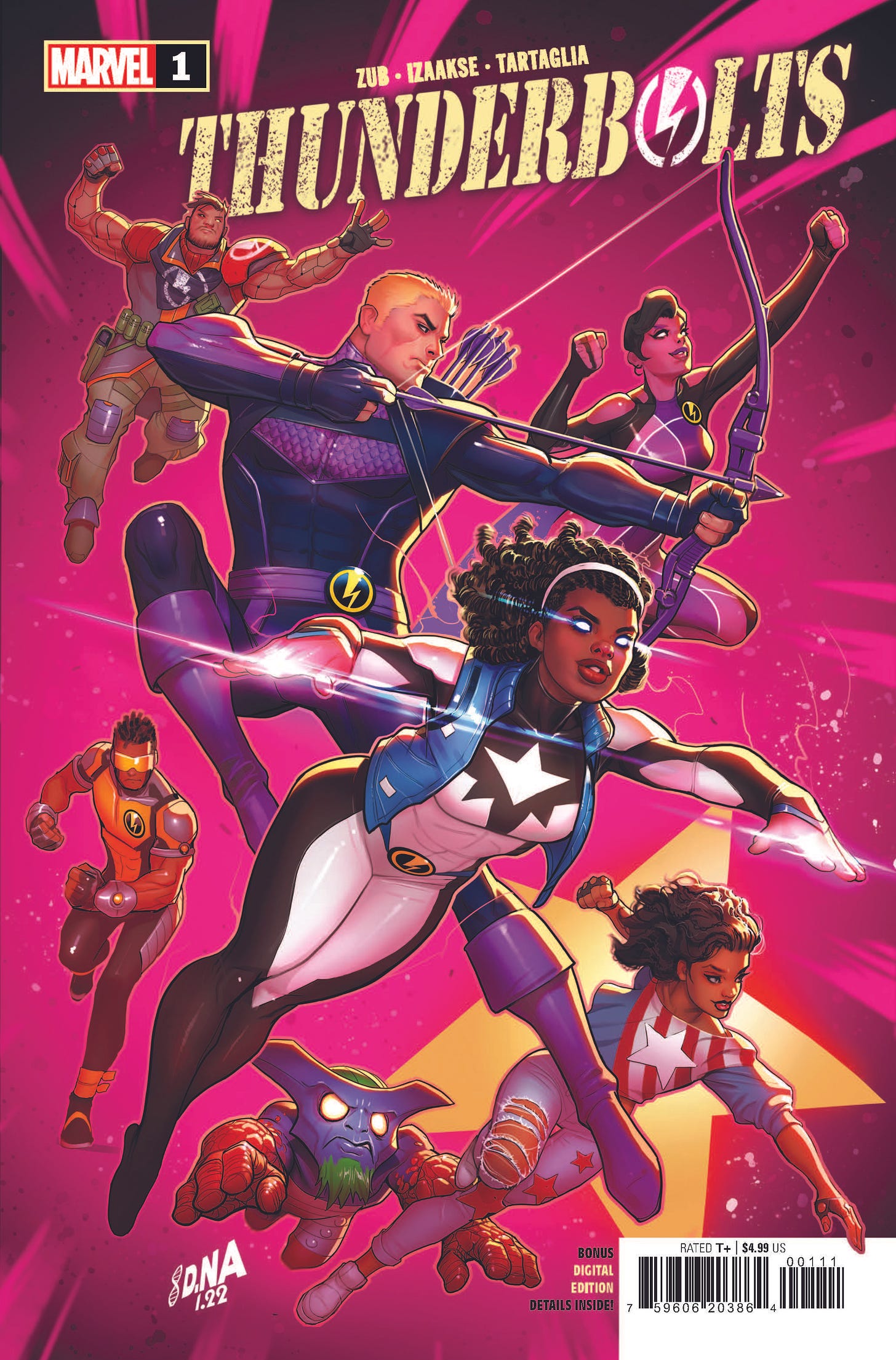


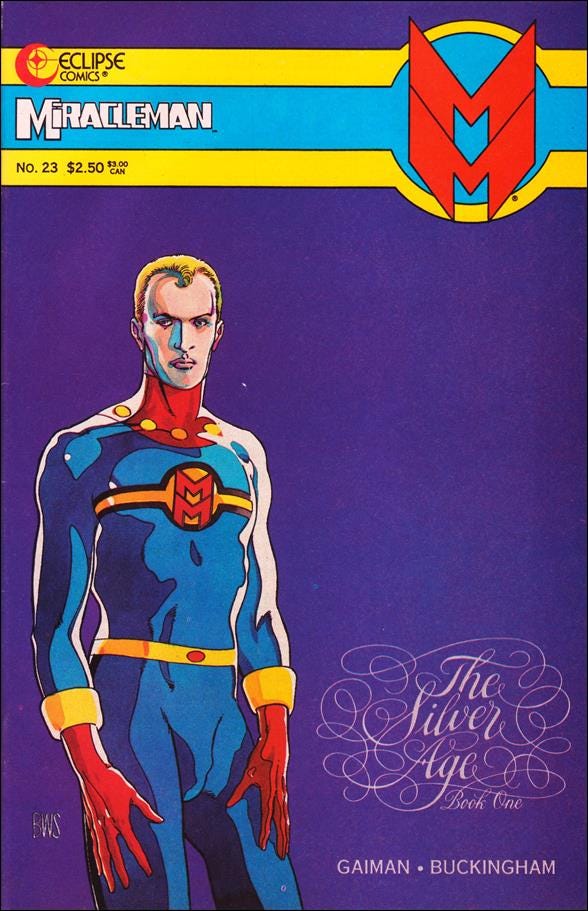
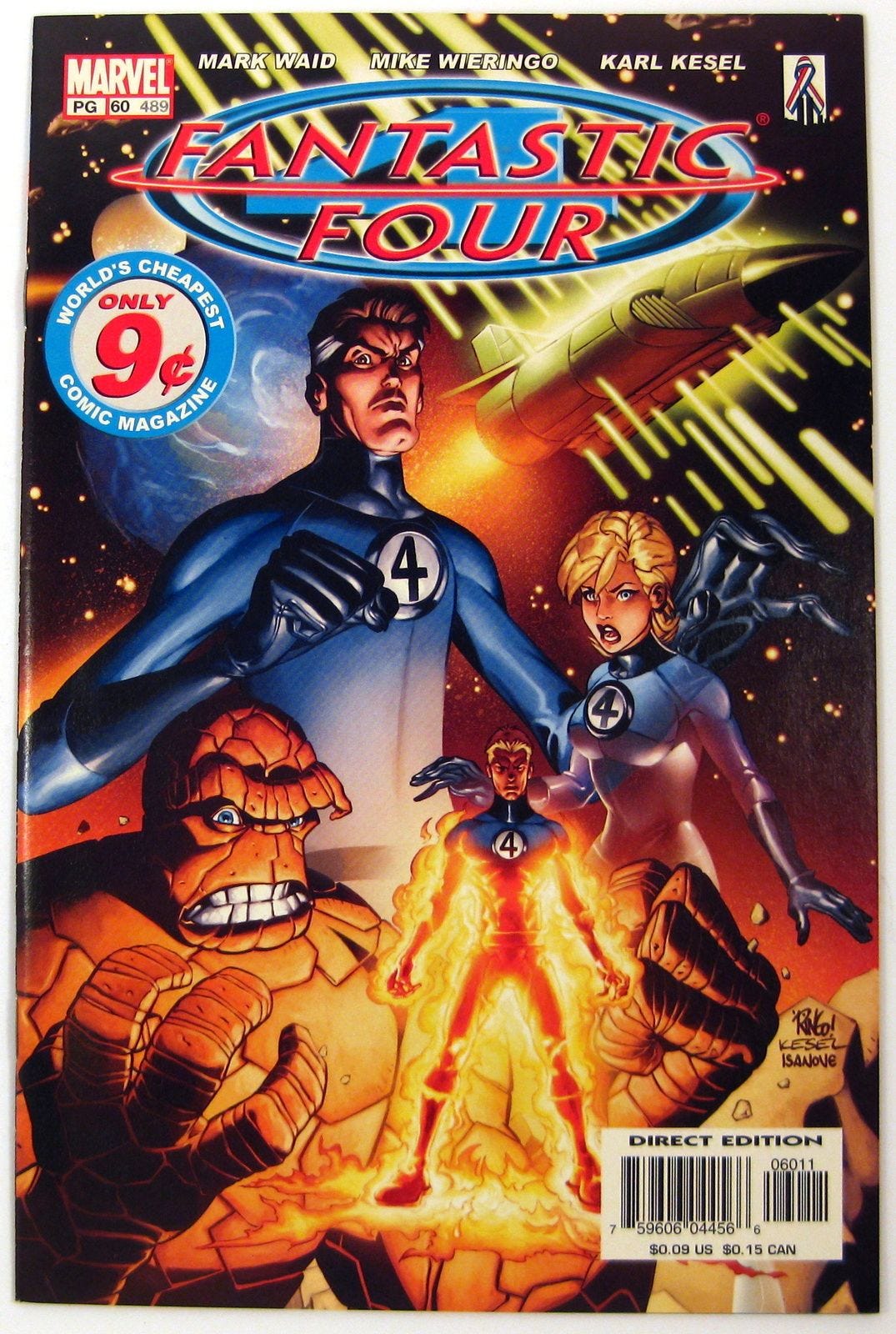
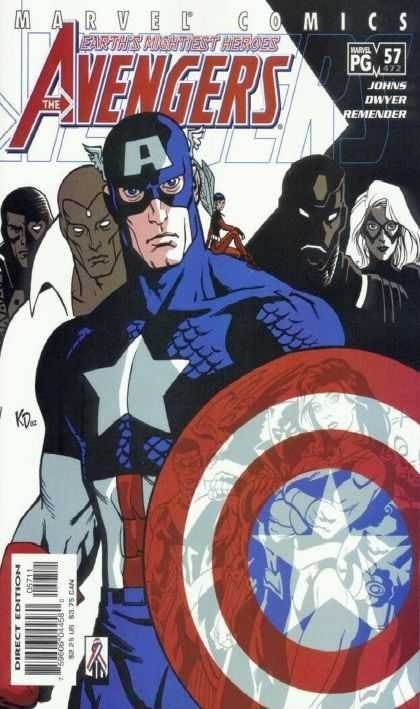
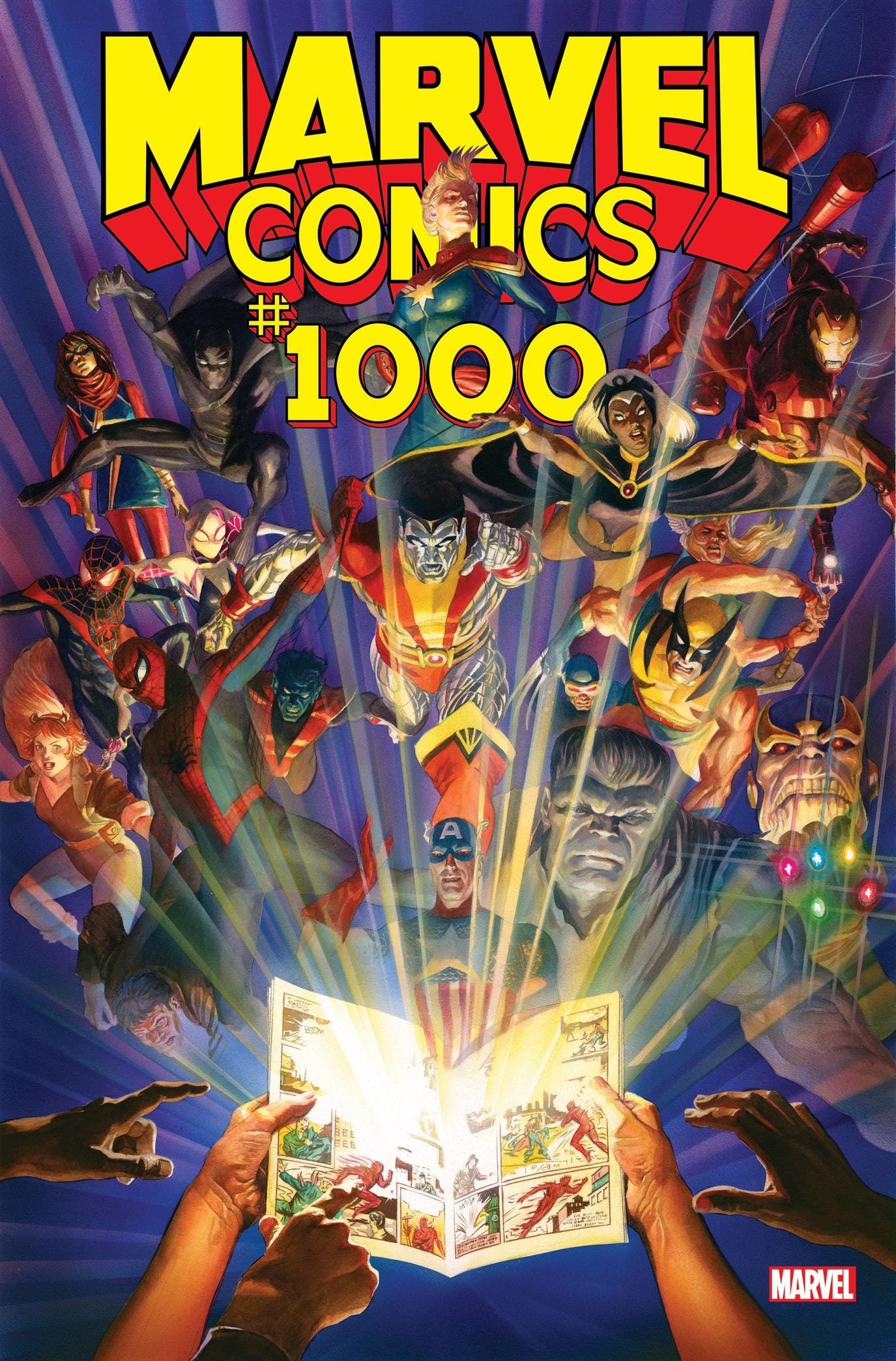
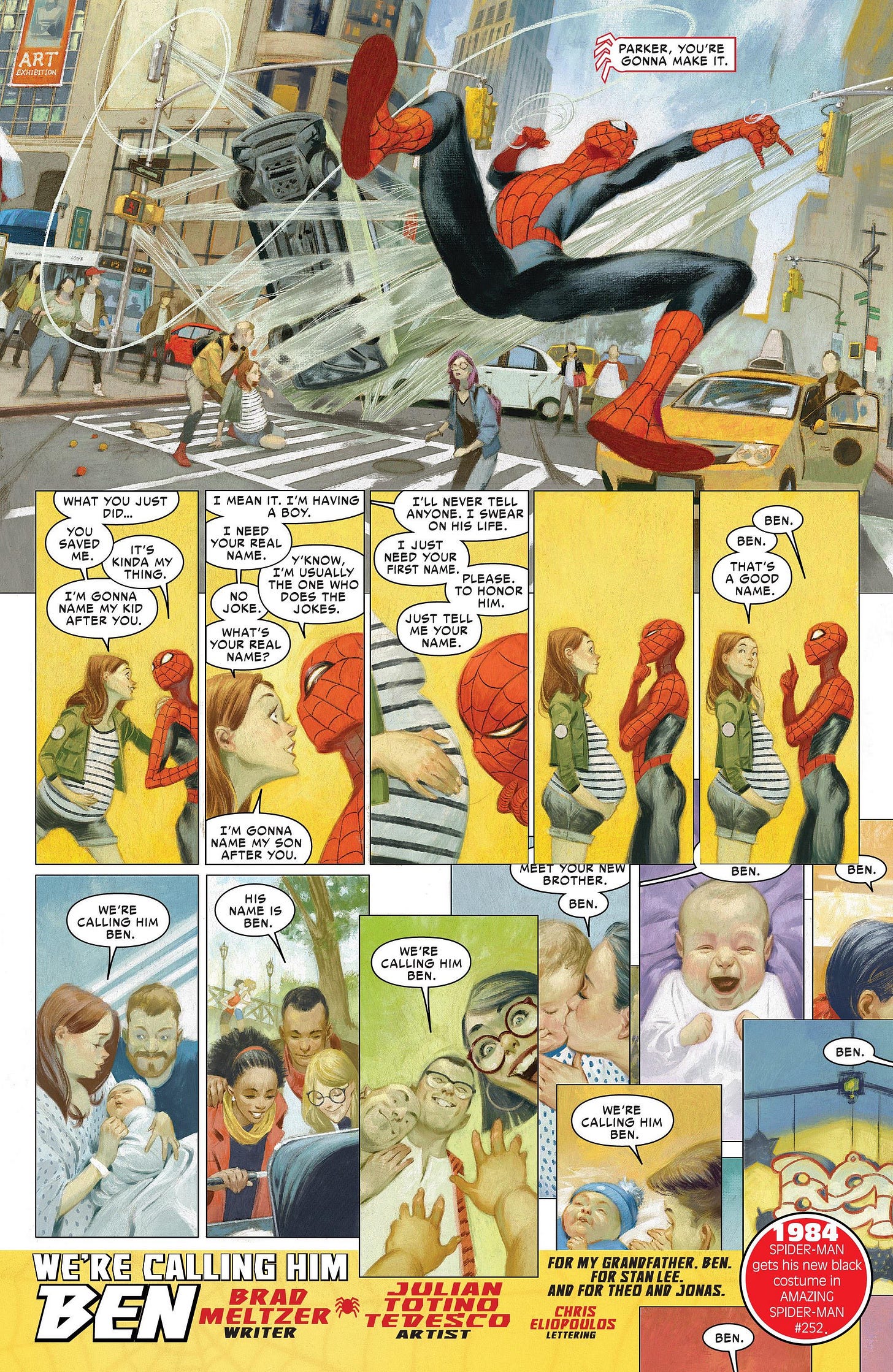
I asked this in the comments on the FF 102 book, but figured it'd be a fun one to see you chew on.
What’s the best “last issue” of someone leaving a significant Marvel run? It has to be Peter David’s last Hulk book (at least before he came back a few years later), doesn’t it? As a more recent example, Dan Slott’s last FF book was really good- I think he nailed the ending with the intro to Reed’s other brothers and sisters.
I wanted to say how much I appreciate and look forward to each newsletter. Thank you so much for all your efforts in putting them together!